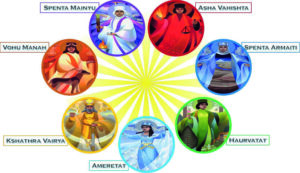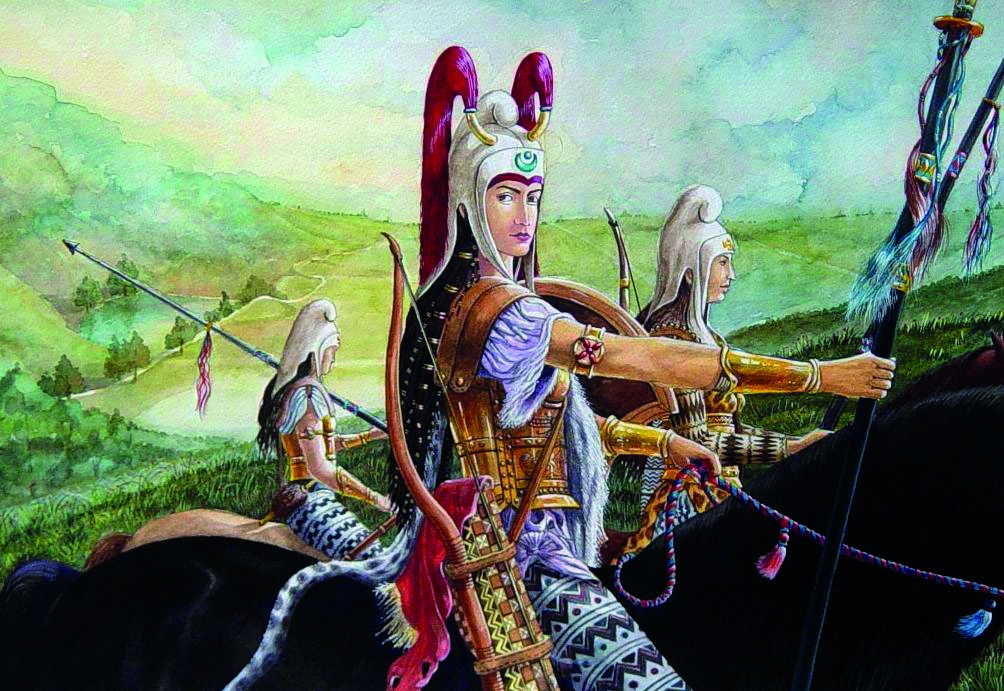 Each year, 8th March (today) is celebrated as International Women’s Day (IWD) – a day when women are recognized for their varied achievements. Spurred by the universal female suffrage movement, IWD originated from labour movements in Europe and North America during the early twentieth century, with March 8 declared by Vladimir Lenin to honour the role of women in the 1917 Russian Revolution.
Each year, 8th March (today) is celebrated as International Women’s Day (IWD) – a day when women are recognized for their varied achievements. Spurred by the universal female suffrage movement, IWD originated from labour movements in Europe and North America during the early twentieth century, with March 8 declared by Vladimir Lenin to honour the role of women in the 1917 Russian Revolution.
International Women’s Day originated on February 28, 1909, honoring a garment workers’ strike in New York. In 1917, women in Petrograd protested for “bread and peace,” sparking a revolution. Initially observed by socialists and communists, the UN recognized March 8th as IWD in 1975 and promoted it globally in 1977.
Women’s Bill Of Rights
In 1979, the UN General Assembly adopted CEDAW, known as the ‘Women’s Bill of Rights,’ to protect women’s human rights. It defines discrimination and mandates legal obligations for countries to eliminate it in both public and private spheres. India signed CEDAW in 1980 and ratified it in 1993 with declarations ensuring adherence while maintaining a policy of non-interference in personal affairs. The Convention seeks not just legal equality but real, substantive gender equality.
Gender Equality (Twentieth Century)
Established on 24th October 1945 to promote international co-operation following the devastation of World War II, the UN has since its inception enshrined the equal rights of men and women. Its founding charter outlines that among its purpose is to promote and encourage “fundamental freedoms for all without distinction as to race, sex, language, or religion.” Less than a year later, Frieda Dalen of Norway became the first woman delegate to address it and USA’s Eleanor Roosevelt famously read an ‘open letter to the women of the world’, urging for their increased involvement in national and international affairs.
Adopted in 1948 by the UN General Assembly, the Universal Declaration of Human Rights was the first global recognition of inalienable rights for all. It set a common standard, outlining civil, political, economic, social, and cultural rights that every human being—regardless of gender—should enjoy, ensuring fundamental freedoms worldwide.
 Gender Equality (Twenty-first Century)
Gender Equality (Twenty-first Century)
At the Millennium Summit in September 2000, world leaders from 189 nations adopted the UN Millennium Declaration, from which a set of eight time-bound goals (Millennium Development Goals) was derived. While each goal was inextricably linked to advancing women’s rights, Goal number three specifically called for promotion of gender equality and Goal number five on improving maternal health. The Millennium Development Goals targeted developing nations until 2015, while the Sustainable Development Goals apply globally until 2030. Gender Equality remains Goal 5, including for India.
From Adam’s Rib…
British nonconformist priest and author, Matthew Henry (18 October, 1662 – 22 June, 1714), known for the six-volume biblical commentary Exposition of the Old and New Testaments, wrote famously about the relationship between men and women, from the story of the creation of Eve, in the Book of Genesis.
The Bible, Genesis 2:22 describes how God created a woman from Adam’s rib by putting Adam into a deep sleep and taking one of his ribs, from which he made a woman and brought her to Adam. Adam said, “This is now bone of my bones and flesh of my flesh” and named her ‘woman’ because she was taken from him. Matthew wrote: “Woman was made of a rib out of the side of Adam; not made out of his head to rule over him, nor out of his feet to be trampled upon by him, but out of his side to be equal with him, under his arm to be protected, and near his heart to be beloved.”
The quote is inspired by the words of Peter Lombard, 11th century Italian theologian and Bishop of Paris, who wrote about marriage and women in his book ‘Sentences’: “She [Eve] was formed not from just any part of his body [Adam’s body], but from his side, so that it should be shown that she was created for the partnership of love, lest, if perhaps she had been made from his head, she should be perceived as set over man in domination; or if from his feet, as if subject to him in servitude. Therefore, since she was made neither to dominate, nor to serve the man, but as his partner, she had to be produced neither from his head, nor from his feet, but from his side, so that he would know that she was to be placed beside himself.”
Status Of Women In Zoroastrianism
The status of a woman in Zoroastrian society has always been highly emancipated and elevated. A fundamental precept of Zoroastrian religion is gender parity. Men and women are treated as equal – our history is replete with examples of women who were trained like men to ride horses, use weapons, fight in battles and even rule as monarchs of ancient Iran. Even after arriving in India, Parsi women demonstrated grit and valour, as seen in the battle of Variav, Gujarat.
Parsis rejoice the birth of girls and boys alike, encouraging both equally in education and careers. In the Avesta, man is addressed as Nmano pati (‘Lord of the House’) and woman as Nmano pathni (‘Lady of the House’), with both playing different, yet complementing roles, at an equitable position. The status of a wife in a Zoroastrian household is at par with her husband.
During the Sasanian era, women had significant rights, including property ownership, legal representation, and choosing life partners. Widows could remarry. The Pahlavi text Madigan-i-Hazar Datistan extensively details women’s rights as mothers, wives, and daughters, reflecting their continued empowerment even today.
Gender Parity Among Zoroastrian Divinities
Noted Zoroastrian scholar Dr. I J S Taraporewala, known for his lucid translation of Gathas, states, “It is rather remarkable that three out of the six Holy Immortals should represent the masculine aspects of God and the other three, the feminine aspect. This is but one of the many hints we get in Zoroaster’s religion of the absolute equality of the sexes.”
Dr. Taraporewala speaks of the Six Amesha Spenta. The Amesha Spenta represents, at one level a Divine quality of Ahura Mazda, and at another, the guardian of a good creation. While the first three (Bahman, Ardibehesht and Shehrevar) represent Ahura Mazda’s Masculine aspects, the other three (Spendarmad, Khordad and Amardad) represent His feminine characteristics. Once again, the ratio of masculine to feminine attributes is equal. The feminine qualities of piety, perfection and eternity attributed to the Supreme Divinity are so apt! Ahura Mazda per se is depicted as gender neutral.
Parsi women have left their mark of excellence in varied fields. Madam Bhikhaiji Cama was a spirited revolutionary who unfurled a flag in Germany, which was to later become the Indian National flag with a few modifications; while Lady Sakarbai Petit gave Mumbai its first veterinary hospital. While Cornelia Sorabji was the first Indian female barrister and fought relentlessly for the rights of women and orphans, Bachubai Moos, with the support of her father Ardeshir, founded the Girton High School for girls.
In Zoroastrian tradition, a woman is as much a Rathestrar (a soldier against the forces of evil) as a man. Zoroastrian women have proven leadership across history, in Iran, India and globally. Rightly, do we pray in the Yasna Haptanghaiti, “May a good ruler, man or woman, rule over us in both the (spiritual and physical) realms!”
Happy Women’s Day!
- In Search Of The Soul - 5 April2025
- Why Pray In A Language We Do Not Understand? - 29 March2025
- Celebrate Nature’s New Year With Purity And Piety of Ava - 22 March2025
